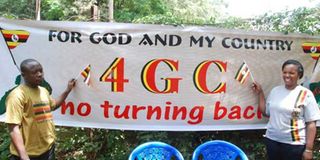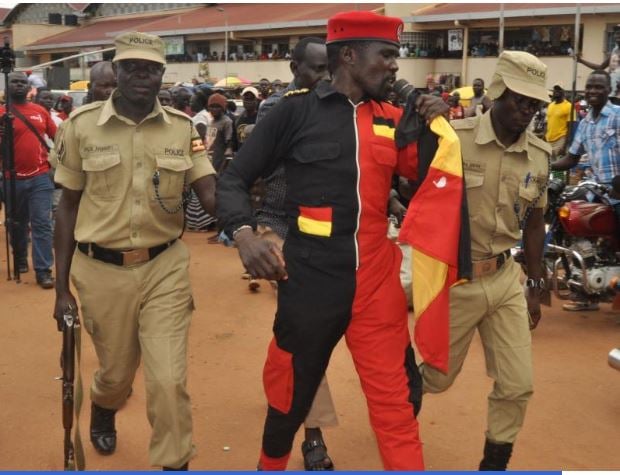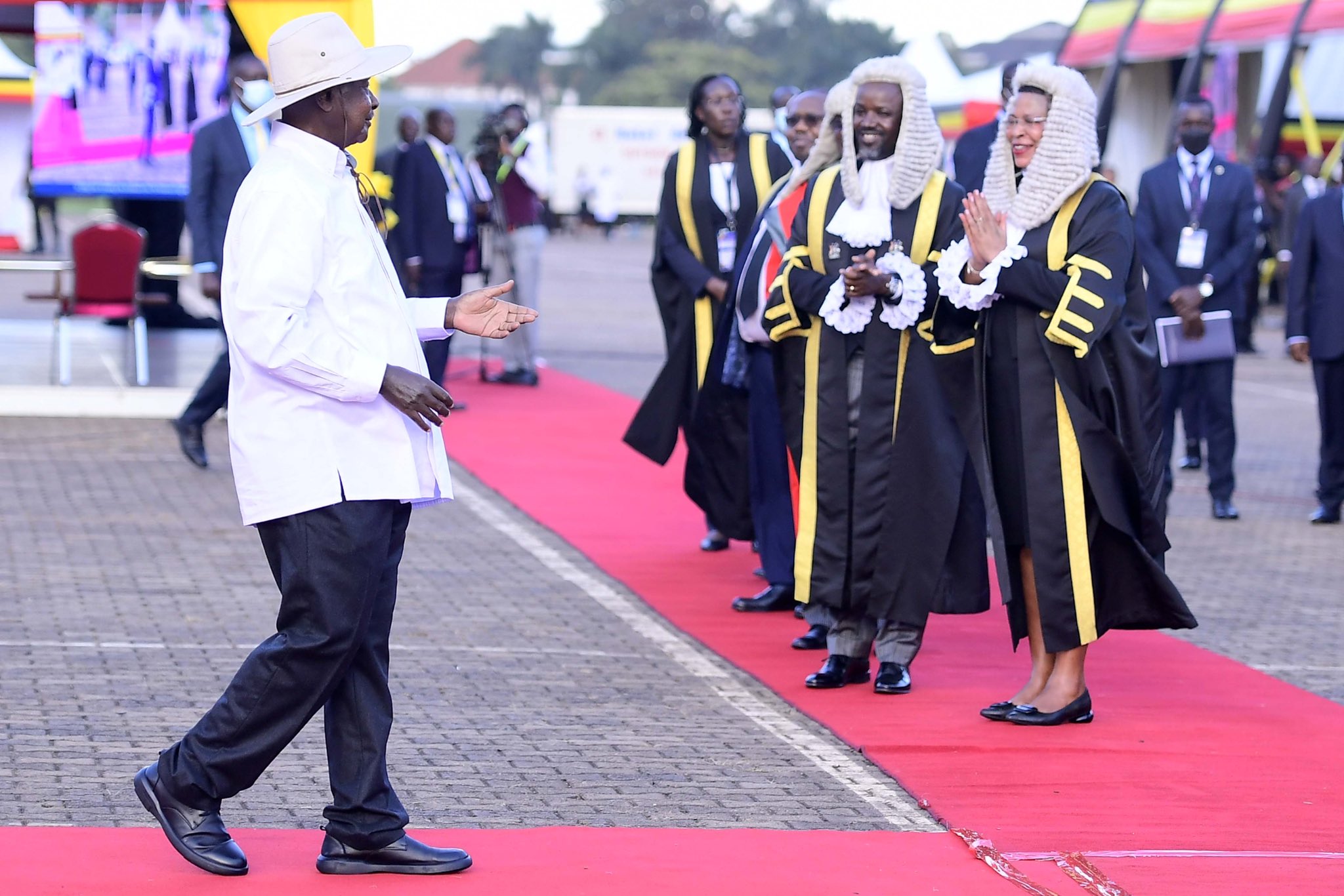From A4C to 4GC: Are they vehicles of change or a terror to the state?

Activits for Change have rebranded. But, would the change of name bring about the change they desire in the governance of this country.
On April 20, the banned pressure group (A4C) announced it would temporarily hold its activities under the banner; For God and My Country (4GC), Uganda’s motto. Its officials said lawyers had filed a petition seeking a declaration that the government ban of A4C was unconstitutional.
Formed hardly a year ago and 10 days earlier on April 10, 2011, A4C had arguably stretched President Yoweri Museveni’s government and his security apparatus to far reaching limits.
Following numerous meetings and high level discussions, Attorney General Peter Nyombi on April 4, invoked Section 56 of the Penal Code Act, issuing a statutory instrument that declared A4C an unlawful society.
“Its membership is banned. If they try to form any other group, it will also be unlawful,” Mr Nyombi said, marking the third time in the history of Uganda section 56 was invoked.
A4C the enigma
Political commentators and analysts have tried to understand the group’s composition, formation and motives. The clear picture has however continued to elude many even those in the opposition.
The public too has had mixed feeling about the group. Although many agree with their cause, they disagree with their methodology which they say is confrontational. Indeed, more than 50 people, including a police officer, have been killed in the last year of A4C activities. Numerous others have been injured, businesses destroyed and livelihoods distorted.
Others, however, feel all this is a necessary sacrifice for political regime change in the country, the kind of change that will not involve the use of fire power but- People Power. The A4C’s actual internal organisation remains a mystery. What is clear, however, is that the pressure group operates in cells, which work independently yet providing complementary functions to each other.
When one group is visibly involved in demonstration, another is preparing for the possible outcome from government reaction. If the demonstrators are arrested, the next cell swings into action, contacting lawyers, the media and preparing sureties in the event that the demonstrators are arraigned in court. At this point, another cell would be labouring to sift through legal books while another will be stationing in banking halls just in case there is need to pay bail.
Arguably, the A4C has provided more awareness of civil liberties and rights of Ugandans in its one year of existence than many of the country’s political parties in their decades of existence.
When the opposition announced its formation under the leadership of a national coordinator, Masaka Municipality MP, Matthias Mpuuga, it was presented as a pressure group protesting rising commodity and fuel prices. Some sections of government chose to ignore the group, calling it a collection of disgruntled opposition politician. They were equated to “bad losers” trying to create relevancy after a humiliating political defeat. Security, however, kept a close eye on its leadership and their activities.
A4C demonstrations were to compel government to intervene by creating measures that would ease taxation thus reduce the cost of living to bearable levels.
On numerous occasions, A4C leaders said the ruling NRM party and president Museveni had illegally compelled the Central Bank to divert Shs2 trillion to the NRM. The money was distributed prior to and during the 2011 general elections. As a ripple effect, huge sums of money in the hands of few triggered a rise in the inflation from 11 per cent to almost 31 per cent. These conditions gave rise to high commodity prices at a time when income levels were low.
A4C gave rise to the Walk-to-Work campaign, meant to share in the plight of many who cannot afford public transport fares.
Twice a week, for four months, opposition leaders attempted to reach their places of work on foot. These attempts attracted crowds of supporters who attempted to accompany the leaders.
Security swung into action. For the first time, the government was paying serious attention to the A4C. Security personnel employed the use of brutal force to crackdown on the campaign. Its visible leaders like Dr Besigye, Ingrid Turinawe, Francis Mwijukye, Sam Mugumya, DP’s Norbert Mao and CP’s Ken Lukywamuzi among other leaders, engaged security in Cat and Mouse games. In most cases, the “games” ended in their arrest, arraignment in court and detention – and then release.
Most memorably was when Dr Besigye had to be airlifted to a hospital in Nairobi-Kenya, after sustaining near-fatal injuries following a brutal arrest near Mulago Referral Hospital. Footage of him being pepper-sprayed, and bungled under a police pick-up not only shocked the nation. It also led to widespread condemnation of the government, nationally and internationally.
When returning to Uganda after several weeks of treatment, many thought Dr Besigye and the rest of the A4C would abandon the campaign. To the surprise of many, the campaign was elevated a notch higher and taken to other towns like Mbale, Gulu, Mbabara and Jinja.
Meanwhile, the government was incurring huge expenses to squash the demonstration. Reports indicated the Uganda Police spent close to Shs500m every day on fuel, allowances, intelligence gathering and riot equipment.
The message changes
At the beginning of this year, A4C began holding public rallies, starting with the various suburbs of Kampala and later taking them across the country.
At this point, the message changed from food prices to regime change. During the rallies, the A4C endeavoured to expose what it termed as gross mismanagement, corruption and outright theft of public resources by the regime.
They called on the public to rise and remove President Museveni and his government because it had failed to deliver on its promises for 26 years. Here too, violence was the norm, especially after the rallies. Attempts would be made to curtail the movement of A4C leaders after the rallies. Many times, the public did not take this lightly, triggering skirmishes.
Security sources say this message could no longer be tolerated. A lasting solution had to be devised. For long, the police leadership had said A4C was plotting violent regime change. A4C officials denied these claims they however said it was not illegal to call for the peaceful removal of an illegitimate government.
Pressing or losing strength
Its current metamorphosis to 4GC comes as a surprise to many. Just two days after the ban, a small group of A4C supporters led by the Forum for Democratic Change (FDC) leader Dr Kizza Besigye, wiggled their way through roadblocks and a barrage of security personal to hold a rally at the Kololo Airstrip to mark the International Day against Police Brutality.
Although having been banned, police did not stop the rally, although the heavy security presence and the ban announcement could have deterred many from attending the event for fear of the usual violence that had become synonymous with A4C activities.
Although poorly attended, the mere fact the rally was held spelt victory for the opposition and particularly the A4C.
Mission of A4C
...to effect democratic change of government through mobilising the masses and setting in motion a process to remove obstacles to free and fair elections by peacefully dismantling the pillars of the authoritarian regime in Uganda and erecting the pillars of democratic rule.




